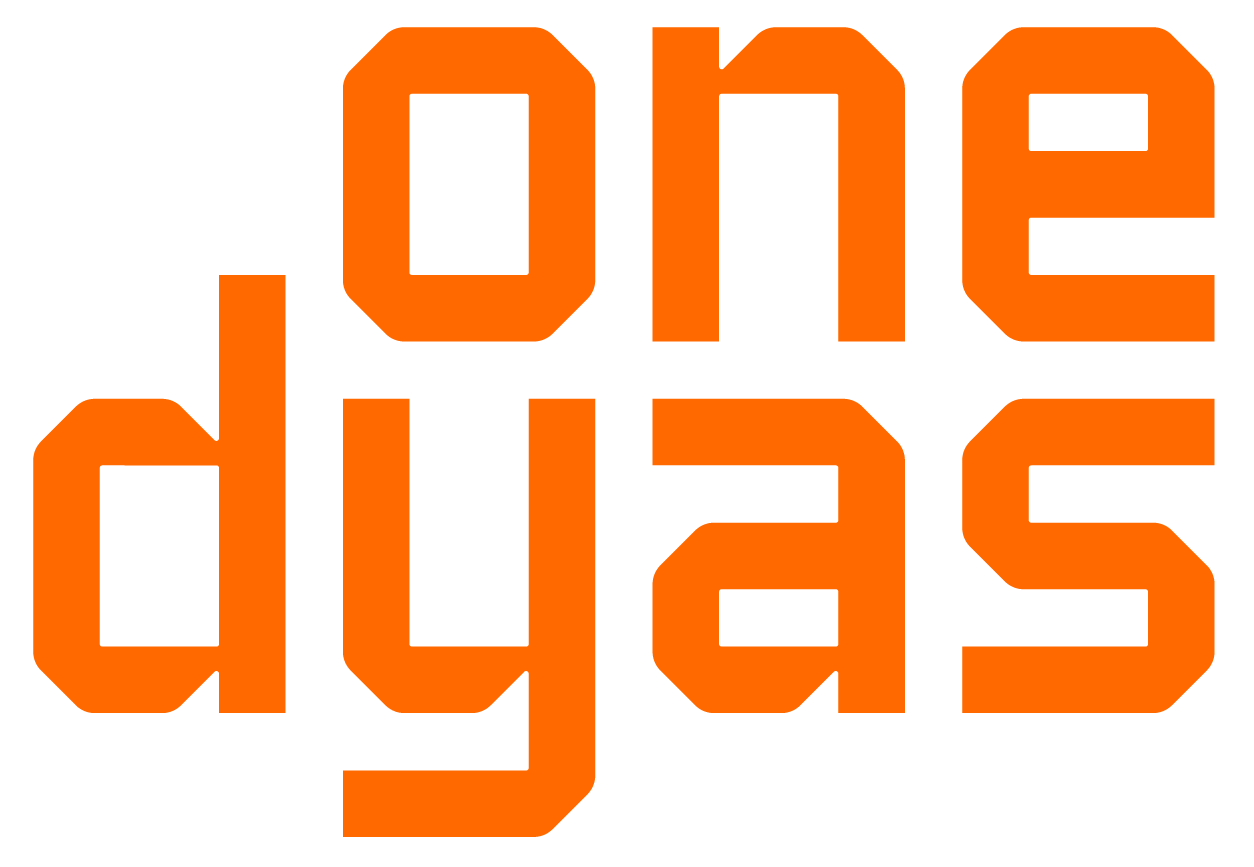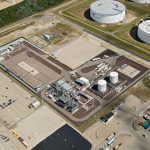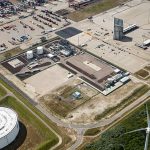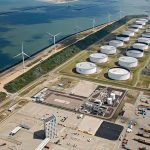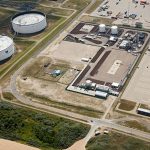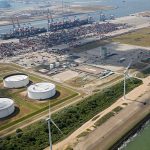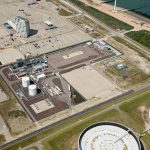In 2014, ONE-Dyas commissioned a state-of-the-art treatment plant on the Tweede Maasvlakte, an industrial facility within the Port of Rotterdam. The plant was developed after the discovery of the Q16-Maas field, then later used to process hydrocarbons from the Maasmond field.
Q16-Maas contained a particularly high 500 m3 of condensate per million m3 of natural gas, more than ten times higher than the average Dutch gas field. It also held a unique amount of butane and propane, which were sold as separate products after treatment.
Q16-Maas ceased production in 2019, but Maasmond kept the plant busy between 2020 and 2022. It currently sits idle, although we are now looking into the imminent drilling of a third gas field.
History
The Q16-Maas gas field was discovered on the MSG-03 test drill in August 2011. The significant volumes involved warranted the development of an onshore treatment plant. The facility was designed to process hydrocarbons reached with slanted producing wells starting onshore and ending the reservoir located under the seabed.
In February 2018 production from the main bore was halted due to excess water production making extraction uneconomical. After identifying new reserves, the main bore was side-tracked and production restarted in the summer of 2018, until the field finally ceased production at the beginning of 2019. In total the Q16-Maas field produced just under 700 mln Nm3 of natural gas.
The Q16-Maasmond gas field was discovered later in 2019, together with an unexpected oil column. Production ceased in September 2022 and work is now being undertaken to evaluate the potential of a third gas field in the vicinity.
Process
To optimise the rich content of the gas, ONE-Dyas outsourced the design of the gas treatment plant to specialised partners. At the same time, we developed a
unique process to extract maximum value and produce LPG in addition to condensate, butane, and propane side products.
The gas, condensate, butane, and propane were all sold, while excess water was discharged to a treatment plant.
The site
The drilling site comprises three well slots, with an onshore management building controlling all operations.
A processing section houses separators, coolers, drying installations, and compressor. From here, a natural gas pipeline runs to a neighbouring GTS grid connection, which then transports the gas onwards. Condensate is transported from storage tanks to the Maasvlakte Oil Terminal (MOT) via a short pipeline located directly to the east under the Aziëweg.
A dedicated truck loading station supports the shipment of propane, butane, and excess water.
Safety
With gas emerging at huge pressures, the field was subject to a stringent framework of safety measures.
To prevent the risk of explosion, the propane and butane storage tanks were half-buried and half-covered with sand.
The entire loading procedure was aimed at preventing explosions and gas escapes. A load arm prevented gases from being released, protected by a break coupling to prevent trucks from starting their engines before disengaging. The loading process automatically stopped when the correct load was reached, with lightning arresters providing an additional measure when loading LPG.
Natural gas condensate was moved from the storage tanks to the adjacent MOT by pipeline rather than truck, which was both safer and more efficient. The storage tanks for natural gas condensate were equipped with a bundwall that collected condensate in the case of any leak.
Sustainability
The Q16-Maas location is fully electrified and powered by green electricity to operate with near-zero emissions. The site also features a connection for drilling rigs, and so the entire project life cycle produces near-zero emissions from drilling to production to decommissioning. Solar panels were also installed during operations, with any further electricity requirements supplied via the grid.
A liquid-tight layer was applied to the substrate before pouring the concrete to prevent soil contamination. Groundwater contamination, meanwhile, was avoided by collecting rainwater via gutters, purifying, and then injecting it directly into the soil.
The condensate storage tanks were equipped with a floating roof to prevent emissions, while meters continuously monitored the air for any presence of benzene.
